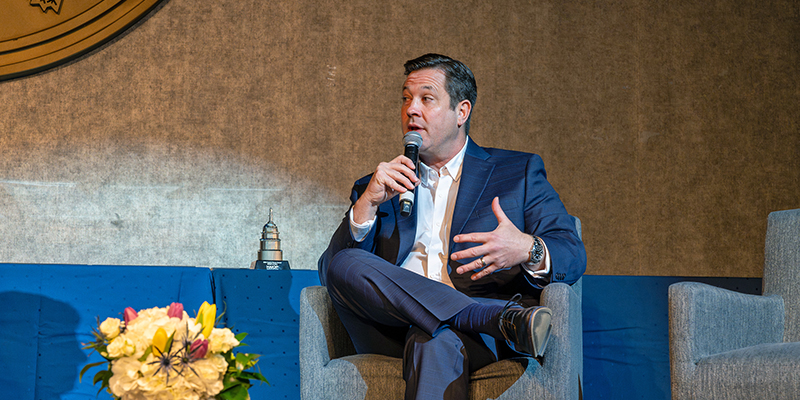As the greatest work-from-home experiment ever continues, many companies are starting to think beyond how and when their workforce will return to the office and tackling a much broader issue: what role the office will play in their corporate strategy going forward.
The past six months have proven that many tasks – and in some cases complete roles and organizations – can be done virtually with little negative impact on productivity and job satisfaction. Yet, employees overwhelmingly want to return to the office, at least in some capacity. A work from home study conducted by Gensler from April to May indicated that, although most people (70%) want to return to the office for the majority of their week, 30% want a flexible work arrangement.
The role of the office in the future will vary from company to company, based on their unique culture and trends within their broader industry, but employee sentiment points to the office retaining its standing as a key driver of culture and magnet for in-demand talent. However, the shift to remote work will have wide-ranging implications, including where offices are located, how they are designed, who utilizes them and when they are occupied.
Embracing the Hybrid Workspace
As the nature of work evolves, the office of the future will not be a single location but an ecosystem of spaces and virtual services that facilitate collaboration, innovation, productivity and well-being. Companies are looking at work and office locations as a single, expansive environment that encompasses coworking space, partner offices, hotels, satellite offices, conference centers and even virtual reality solutions available to give every employee the space and resources they need to innovate and stay productive.
In this office design, the office serves as a “hub” connecting multiple “spoke” locations to facilitate everything from employee desires for a change of scenery to an environment conducive to long, focused work. To make this office model successful, companies must be diligent in creating the virtual and physical networks that connect these locations and keep employees engaged, productive and loyal.
While many have speculated that COVID-19 will trumpet the death of the city, corporations will likely continue to invest in space in urban areas for one simple reason: that’s where the talent is. To ignore these urban hubs, which draw young people looking to build their professional network and supercharge their careers, risks losing valuable talent to competitors who do invest in destination offices in superstar cities.
But corporations also have more flexibility to secure space outside of commercial business districts. Reimagining the urban and suburban split and long- and short-term lease agreements can create flexibility for corporate real estate strategies and open new talent pools, while vastly improving workers’ lives through more variety of workspace, positioned closer to home.
Attracting Talent to Social and Safe Spaces
If the office is to become the hub of this new model, it will need to become more engaging, comfortable and flexible to meet the needs of employees both on-site and online. If workers can do their work anywhere, offices must offer some draw beyond free coffee and a place to park one’s laptop.
Offices must provide the space and programming to foster social capital, culture and co-creation. This focus on the human-social experience is important to attracting and retaining the best talent. The social benefits of the office environment are essential to fostering employee loyalty and commitment, which drive talent retention.
By creating value through community and collective experiences, rather than aggregating individual contributions, the office will serve a new function that pulls in employees, rather than merely requiring them to show up, and drives their loyalty to the corporation.
This will likely mean more room for amenities and social learning that brings people together in the office of the future, while still maintaining employee health and safety.
Several of the solutions companies have devised to respond to COVID-19 will last long after the pandemic. A decades-long trend towards densification –with rentable square feet per employee dropping from 228.2 square feet to 195.6 square feet from 2019-2019 alone, according to JLL’s annual Occupancy Benchmarking Report – has reversed and the number of individual desks within a space will fall as more people opt to do their focused work remotely.
Already, collaborative spaces are taking over more square footage than individual offices, allowing a small group of employees to work on-site together while still staying physically distanced.
Occupiers and landlords can work together to ensure robust health and safety systems are in place and communicate to employees the steps they are taking to reduce risk in shared spaces.
Creating a Cohesive Community
While the benefits of an elastic workforce are numerous, one significant drawback is the reduction in opportunities for employees to foster real engagement and community building that happens naturally when people are in a shared space.
Leaders will have to undertake intentional strategies to combat this degradation of corporate culture, which over the long term can weaken performance and undermine business strategy.
Designing offices as destinations, in locations that are easily accessed and that foster feelings of safety and social connectivity, will be essential for businesses to succeed in the next normal. The challenge for developers will be to help enterprises create offices that are safe, memorable and sustainable, connecting productivity to purpose – for the good of all.
The world is re-examining how we go to work, and the implications for the office sector can’t be overstated. Prepare for the paradigm shift at Officecast 2020, NAIOP’s new office series, online Nov. 9-10. Registration is just $99 for NAIOP members!














